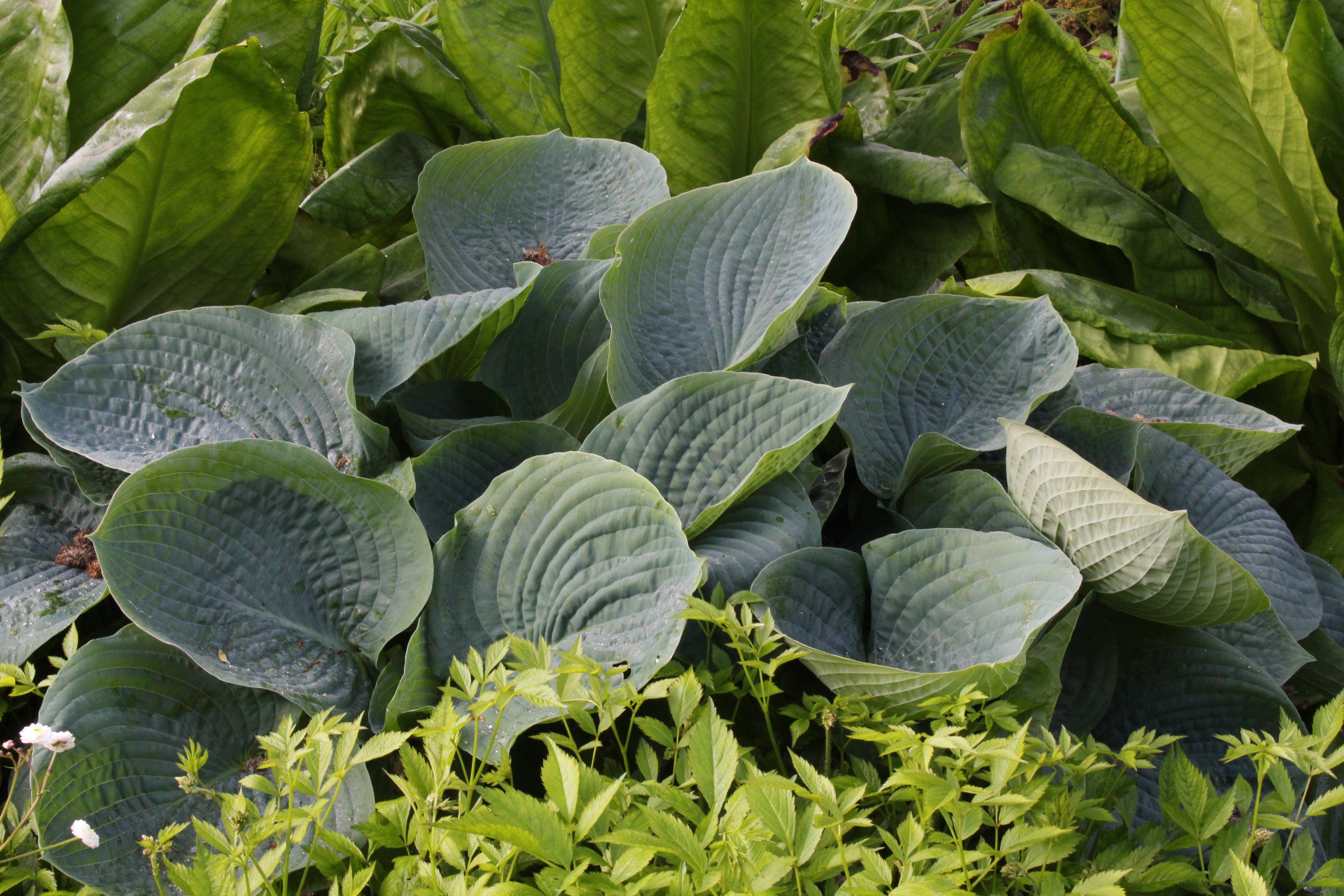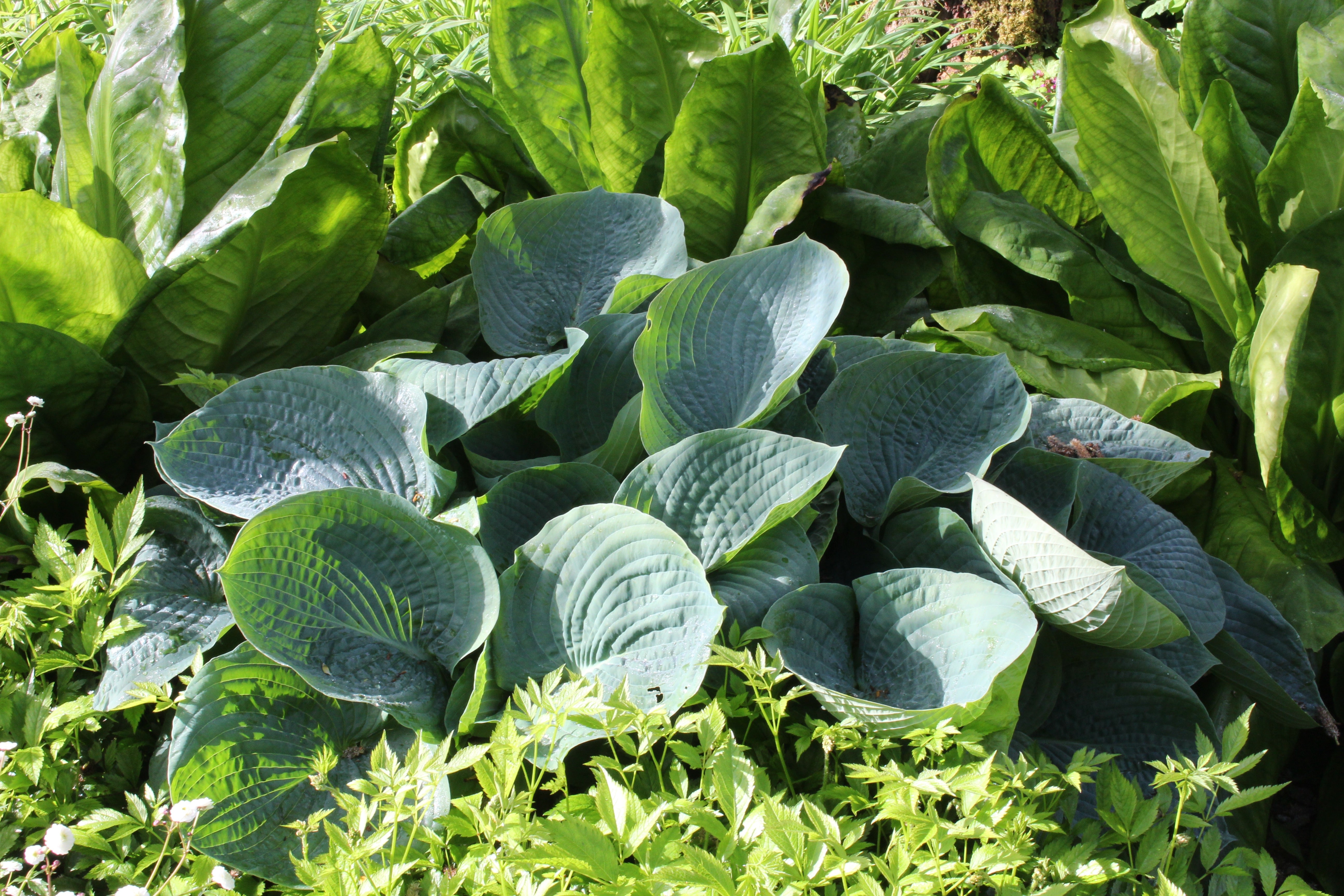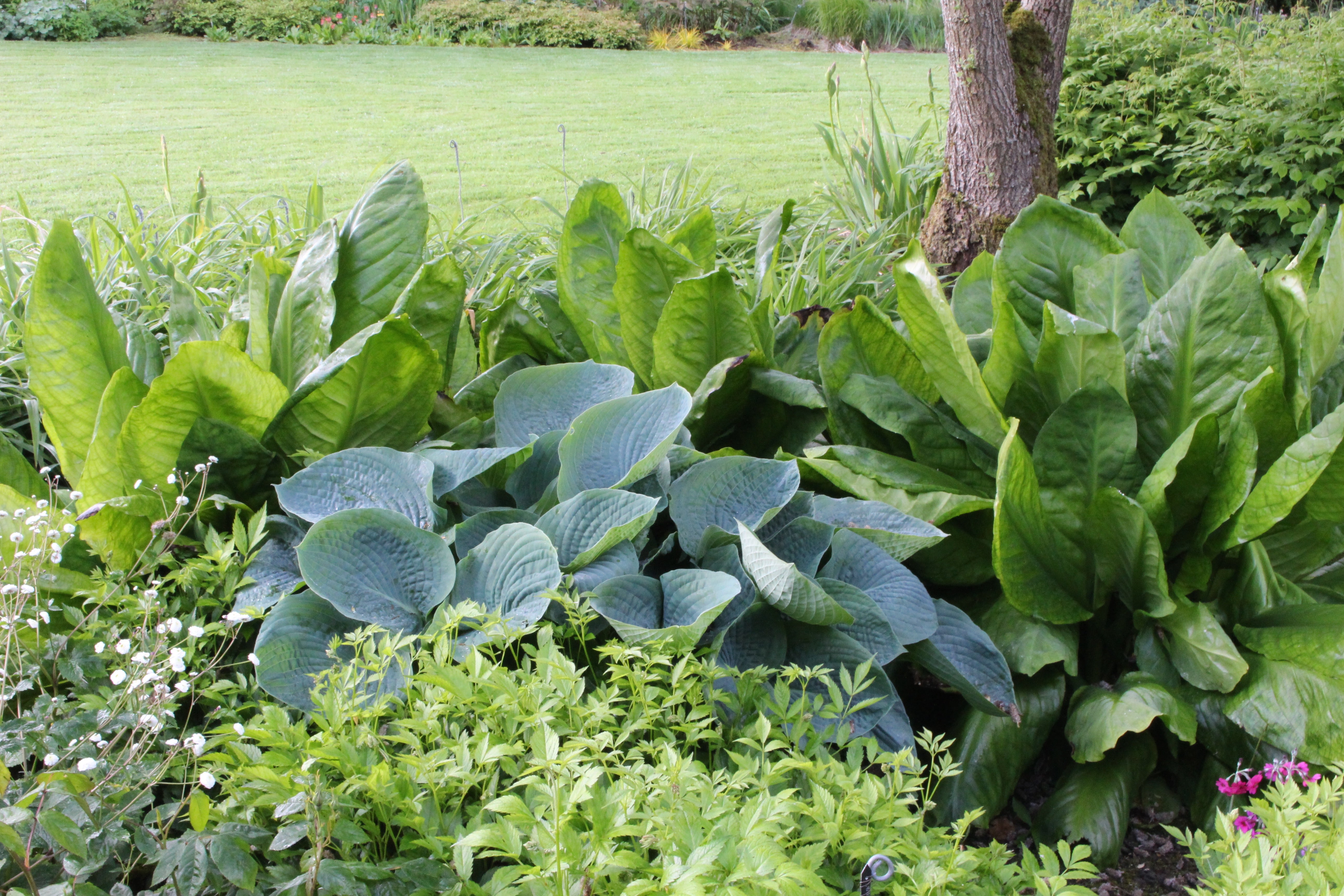Hosta 'Blue Angel' (sieboldiana)
Approx. 0.5 litre pot
About this cultivar:
Hosta 'Blue Angel' (sieboldiana) is usually included in any list of the top blue hosta cultivars. The blue-green foliage often fades to dark green by the end of the season and near-white, funnel shape flowers bloom in dense clusters forming a great display.
It is another of the many Hostas originated by Florence Shaw of Massachusetts and registered on her behalf by Paul Aden of New York (1986). 'Blue Angel' was registered as having originated from a cross of two unnamed seedlings. The former species, H. 'Sieboldiana', appears to be in its genetic background but the narrow, more pointed leaves also shows influence by H. montana.
According to The Hostapedia by Mark Zilis (2009), this cultivar "...has become the premier large blue-green hosta cultivar. It can be used in a variety of ways in the landscape, including as a ground cover, in small groups, or as a specimen plant. Though it is not a great breeding plant, it has been the source of many outstanding sports."
From the Field Guide to Hostas by Mark Zilis (2014), "...lack of pod formation limits its usefulness as a breeding plant...Its first sport, 'Green Angel', came out of tissue culture in the mid-1980s and was the first to demonstrate the possibility that blue-leaved hostas could sport green-leaved versions."
The New Encyclopedia of Hostas by Diana Grenfell (2009) states: "Among the best large, blue-leaved hostas for gardens in warmer climates. Tolerates quite dry soil when fully established. If carefully sited, it almost attains the bluest category. A classic hosta."
This cultivar has been awarded the Royal Horticultural Society's Award of Garden Merit and has also appeared in several of the Popularity Polls by members of The American Hosta Society.
A classic!
- Position: Full sun, partial shade, full shade
- Soil: Almost any soil, grows well in Ballyrobert
- Flowers: June, July
- Other features: Grows well in Ballyrobert, Interesting Foliage or Fruit, Suitable for Container, Royal Horticultural Society Award of Garden Merit (RHS AGM)
- Hardiness: H7 - Hardy in the severest European continental climates (< -20°C), Fully hardy - grows well in Ballyrobert!
- Habit: Clump forming
- Foliage: Deciduous
- Height: 60 - 90 cm (2 - 3 ft)
- Spread: 90 - 180 cm (3 - 6 ft)
- Time to full growth: 2 to 5 years
- Plant type: Herbaceous Perennial
- Colour: Blue, green, white
- Goes well with: Cornus, ferns, allium
About this genus:
Hosta (hos-ta) is a genus of plants commonly known as plantain lilies, giboshi, or the old botanical name Funkia. The name Hosta is in honor of the Austrian botanist Nicholas Thomas Host. However most modern plants were introduced from Japan to Europe by Philipp Franz von Siebold in the mid-19th century. Don't worry about Philipp's legacy being forgotten though; he has a species named after him! (Hosta sieboldiana).
Hosta are often touted as the best shade-loving plants for the perennial garden, which is hard to dispute. In cultivation, Hosta readily mutate and have produced thousands of novel colours and leaf forms (blue, gold, and variegated are the most popular). Because of their great foliage Hosta are often thought of as foliage-only plants, but it is worth noting that many cultivars have fantastic flowers - see "Sum and Substance" and "Stained Glass" for example.
You will read that for best performance, Hosta prefer to be out of full-sun. However if you live on these islands it is doubtful you will ever get any full-sun; so you may try them in your brightest spot as long as they have some moisture. You may have had some experience with slugs and Hosta. So have we. We have found that cultivars matter (some are tastier to slugs than others) so we try to grow only slug resistant cultivars or ones that grow so many new leaves the slugs can't keep up. We've also found that by not using chemicals little mites that eat slugs eggs are allowed to multiply and keep the population down - let nature runs its course! Some slug-loving -predator should turn up eventually!
How to use Hosta? Well, if you are paranoid about slugs, place the plant in the middle or back of the border where you can only see the upper part of the plant. Slugs don't climb so high so the lower leaves that get slug damaged won't be seen! As for plant partners we put some red stemmed dog-woods near or through them (Cornus), or large leaf -ferns. It is common to put bulbs in and around Hostas; we do it with Allium. But we don't do it with Narcissi or Tulipa; they don't like the competition!






